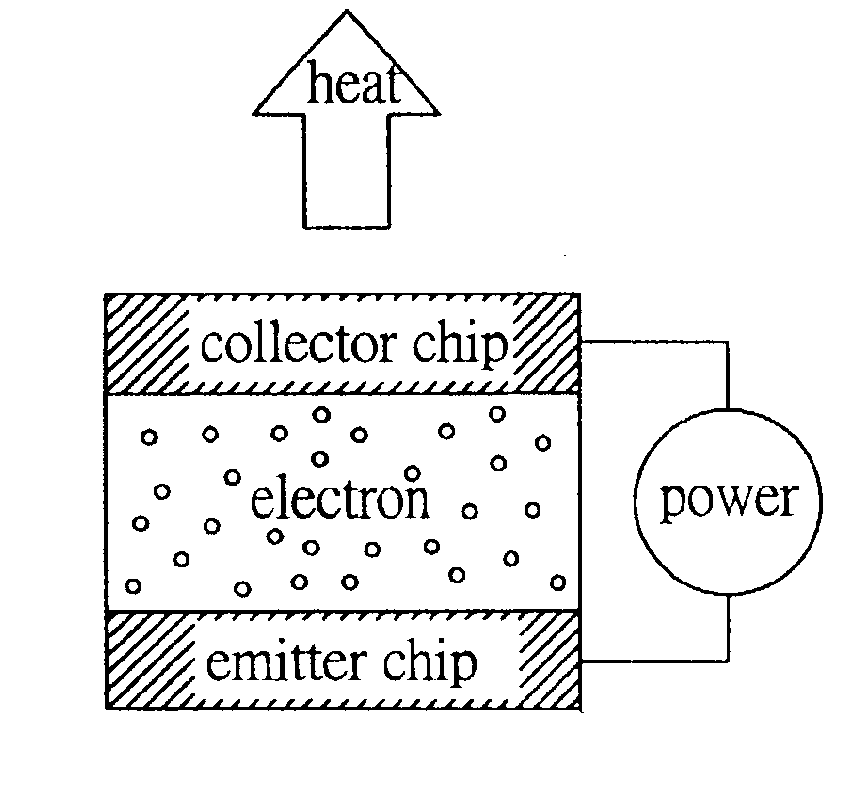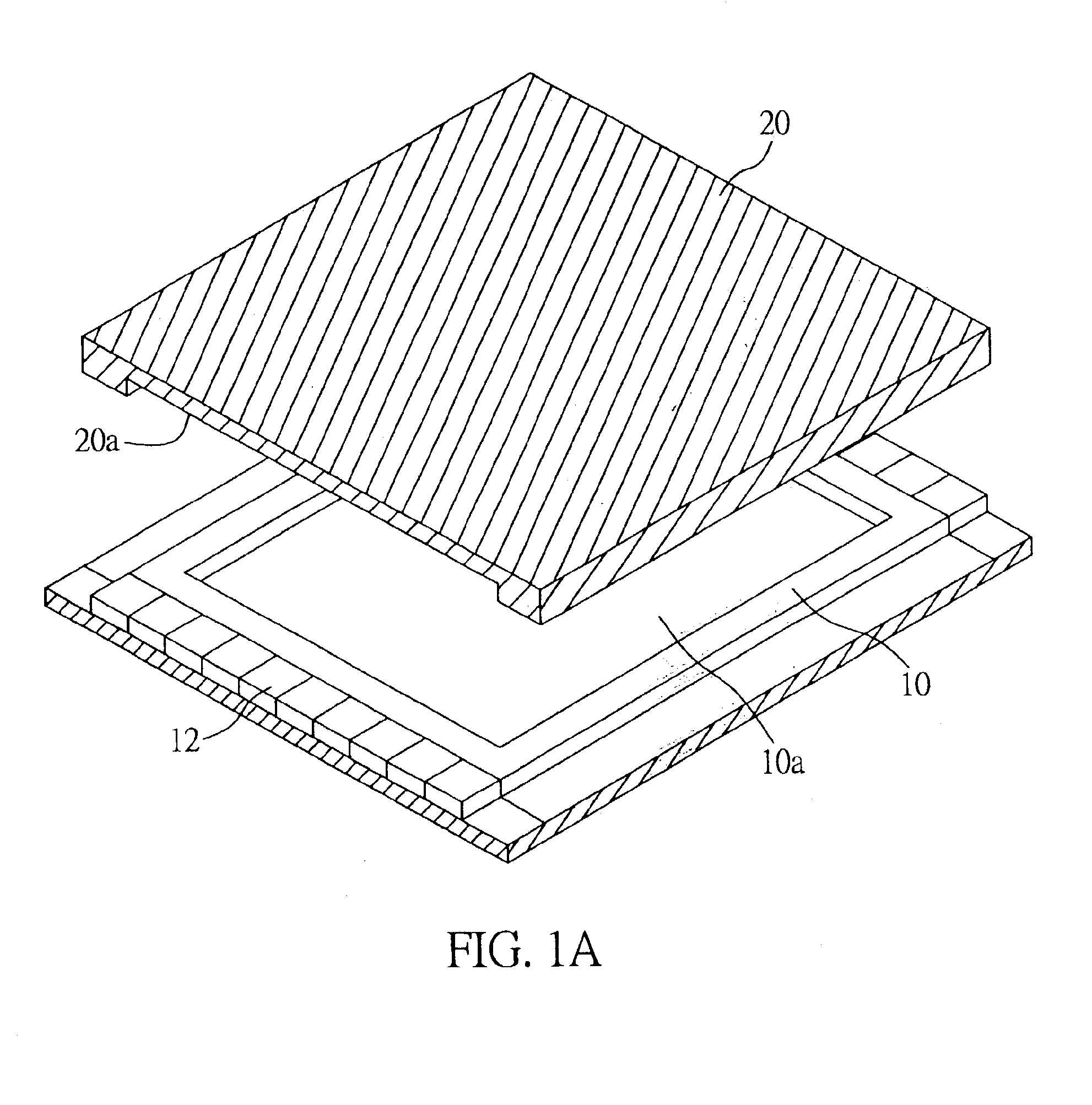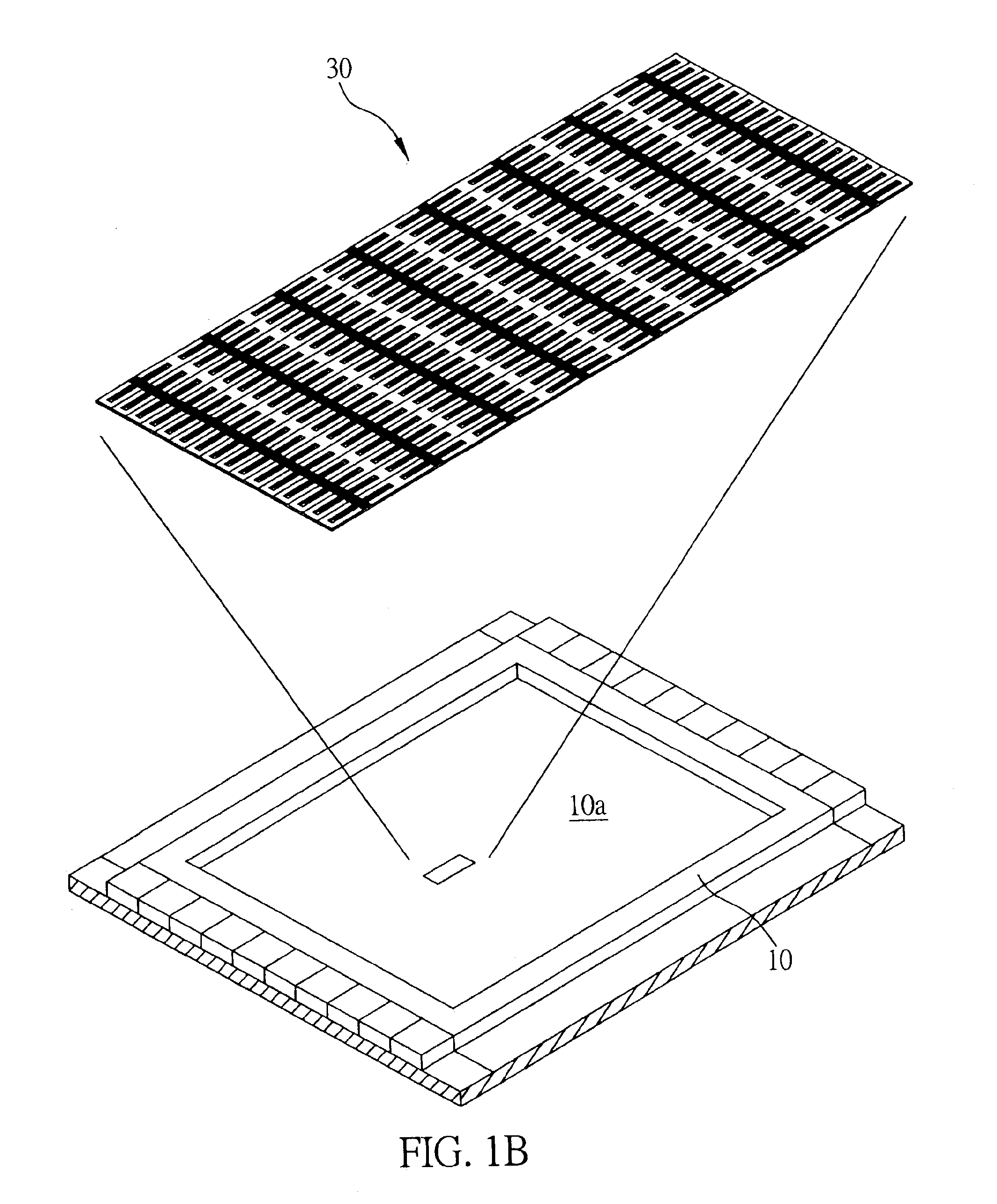Micro cooling and power supply structure
- Summary
- Abstract
- Description
- Claims
- Application Information
AI Technical Summary
Benefits of technology
Problems solved by technology
Method used
Image
Examples
Embodiment Construction
[0031]FIG. 1A, 1B, and 1C are schematic diagrams illustrating a micro cooling and power supply structure according to one preferred embodiment of the present invention. The microstructure is formed with a chip module having an emitter end chip 10 and a collector end chip 20 that is encased above the emitter end chip 10. The emitter end chip 10 has an emitting surface 10a, while the collector end chip 20 has a collecting surface 20a that corresponds to the emitting surface 10a, and the two surfaces 10a, 20a are separated by a vacuum insulation layer having a nanometer range thickness. The emitting surface 10a of the emitter end chip 10 is machined in such a way that it has a micro cantilever beam array structure 30 with from a few thousand to many thousand sets of micro cantilever beam components 31 arranged as shown in FIG. 1B, which enable electrons in the emitter end chip 10 to emit from the micro cantilever beam components 31 and tunnel through the vacuum insulation layer between...
PUM
 Login to View More
Login to View More Abstract
Description
Claims
Application Information
 Login to View More
Login to View More - R&D
- Intellectual Property
- Life Sciences
- Materials
- Tech Scout
- Unparalleled Data Quality
- Higher Quality Content
- 60% Fewer Hallucinations
Browse by: Latest US Patents, China's latest patents, Technical Efficacy Thesaurus, Application Domain, Technology Topic, Popular Technical Reports.
© 2025 PatSnap. All rights reserved.Legal|Privacy policy|Modern Slavery Act Transparency Statement|Sitemap|About US| Contact US: help@patsnap.com



